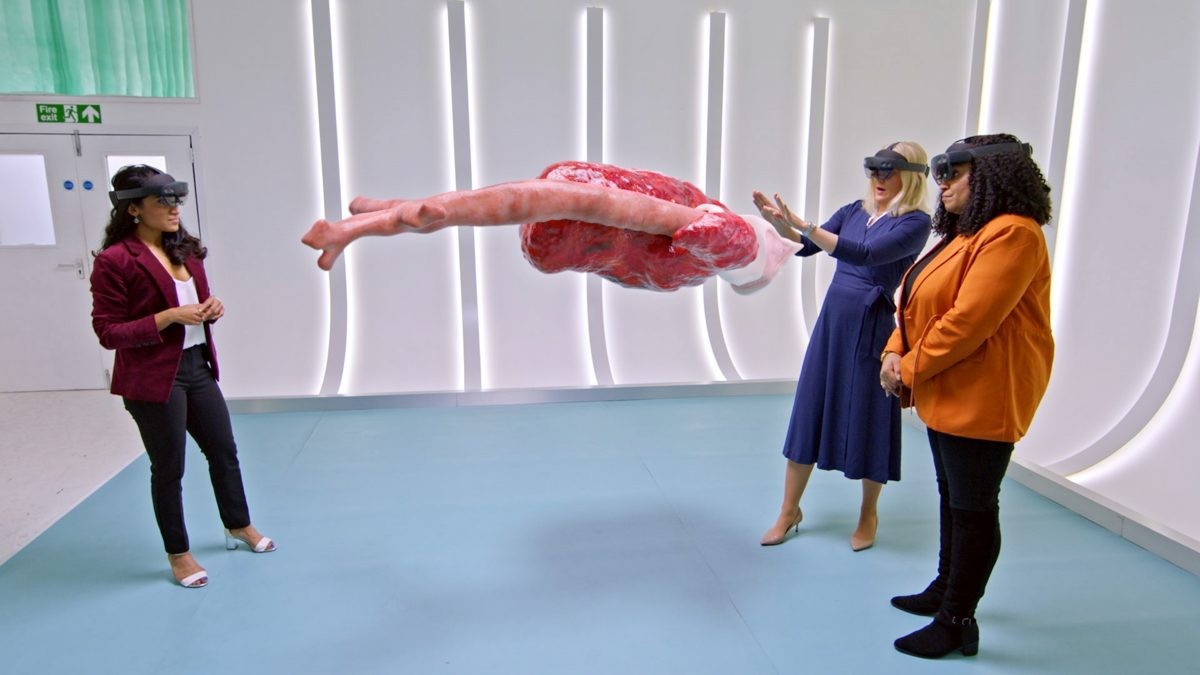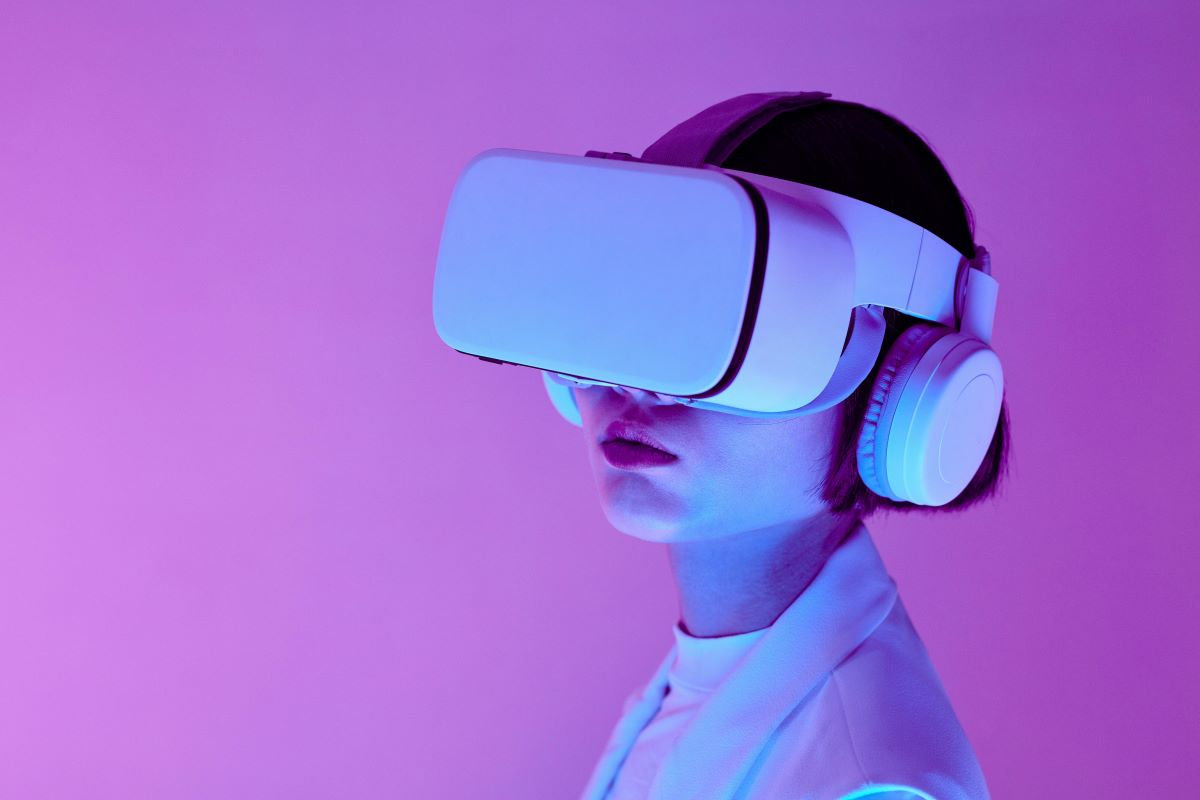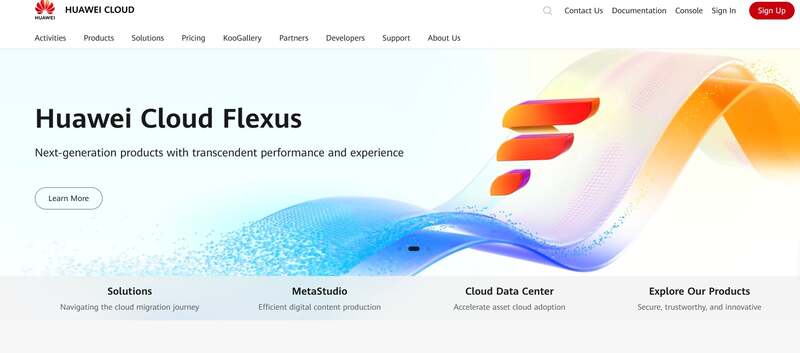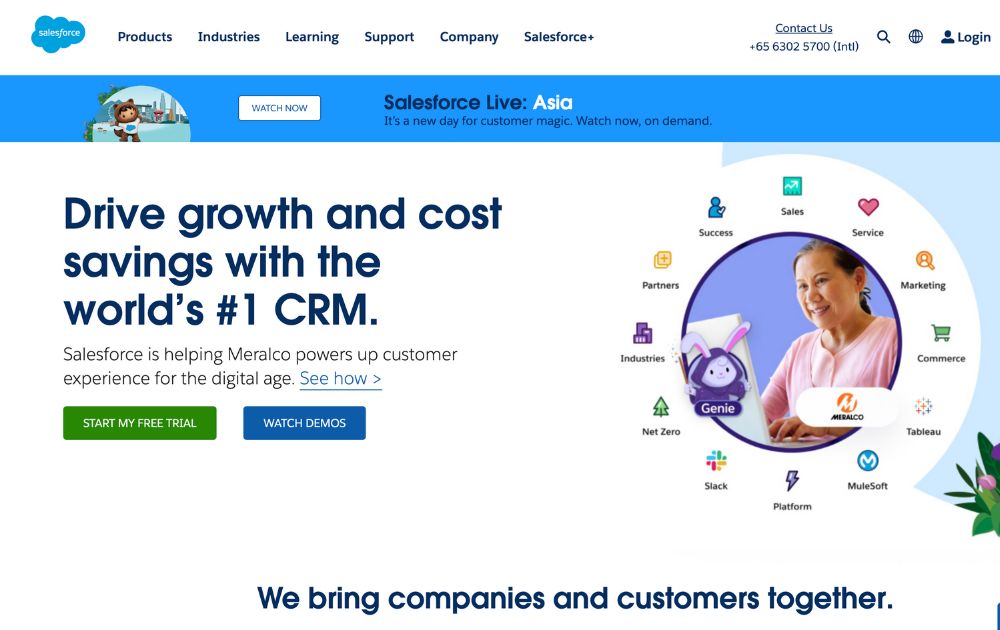Technology
Augmented Reality Medical Appointments – Will They Happen Soon?
Published
3 years agoon

X-rays and CT scans have been helpful in imaging and give us insight into what’s inside our bodies. However, technology has made it possible to see the inside of our bodies a bit clearer, all thanks to augmented reality (AR). In practice, several doctors use it for preparation for surgery. However, the application of AR for diagnosing and taking a good look at what’s inside our bodies has yet to be explored. What can an augmented reality medical appointment look like for us, then?
Your Body Uncovered
Your Body Uncovered is a BBC2 TV Show hosted by Kate Garraway. She and the guests explore what’s inside the human body. In this show, medical practitioners, particularly radiologists, work alongside artists to create a digital render of the patient’s body. With Microsoft Hololens, the patient can see what’s inside their body, and a doctor explains what makes it different.
The show tackles Hilda’s case. She has uterine fibroids, which have become painful for her. Hilda was taken aback and got emotional by the image she saw regarding her uterus. The doctor (Dr. Stephen Quinn) in the show suggests that there are around 90 fibroids inside Hilda’s uterus. Normally, any woman who has fibroids would have five to ten. Plus, Dr. Quinn found the likely cause of the pain Hilda experiences every day .
After that, Hilda underwent surgery to remove the fibroids. During surgery, they found 100 fibroids, and the doctors are hopeful that she will no longer experience the pain she has felt.
How AR Works in the Show
Patients undergo an in-depth scan of their bodies. Radiologists help identify tissues and organs. From there, artists draw around or use artificial intelligence.
Augmented Reality Medical Appointment: Current Applications
It’s no surprise that technology will become a huge part of any medical practice. If anything, it’s already started for some physicians. But when will AR make its mark in most medical practices?
Dr. Quinn predicts that AR will be part of any medical practice, in around five to ten years. On the other hand, radiologist Dr. Dimitri Amiras suggests that while AR is promising, imaging can be time-consuming.
As already mentioned, AR has been used in surgery, and there are different companies dealing with AR, such as BioFlight VR, EchoPixel, and Medical Realities.
In diagnosing, one big name in AR in the medical field is Accuvein. This helps medical practitioners find veins by scanning the patient’s arm or area where they will inject. Other startups in this field include TouchSurgery and ImmersiveTouch.
But will everyone accept AR to help them view images of their bodies? Dr. Amiras has had the experience where 90 percent of his patients are fascinated and interested in seeing their bodies in AR. Ten percent aren’t keen on seeing it. Having the AR option opens new avenues to learn more about the human body.
Other Practical Uses in Medicine, Healthcare, and Education
Curiscope
One such example of using AR to teach non-medical practitioners is Curiscope. It’s aimed at kids, but anyone with a smartphone can use Curiscope to examine the human body in AR. They need to buy a Virtuali-Tee and download an app to help them see different systems of the body.
Random42
AR has also made its way in pharma. It can be used in sales and manufacturing, just like Random42’s AR software. Sales reps can show healthcare professionals data and outcomes through AR. Meanwhile, on the manufacturing side, it helps engineers ensure they produce machines that will help healthcare professionals and patients.
Dorothy
Dorothy is an app for those who have memory issues. It reminds users to take their medicine or do other activities, guides users using AR, and shows you the location of your loved one with a memory issue.
You may like
Technology
Meta Quest 3 vs PlayStation VR2: Which to Buy in 2025?
Published
2 weeks agoon
October 2, 2025
In just a few years, virtual reality has made significant strides. The release of Meta Quest 3 and PlayStation VR2 has sparked debates over which headset is the best. So, if you’re a casual gamer, a tech enthusiast, or just a fan of immersive entertainment, this article can help you choose between the two. Let’s break it down.
These two are regular placers on lists of the best headsets, thanks to their lower price. However, what makes these VR headsets great is that despite the lower price, they deliver high quality. If you’re looking for VR headsets that are less expensive, these two are excellent options. Here’s a head-to-head review of Meta Quest 3 vs PlayStation VR2:
Design and Setup
Meta Quest 3 comes from a long line of Meta’s standalone, wireless VR. You won’t need a PC or console to run this bad boy. It’s also totally portable, setting up in seconds and allowing you to jump straight into the game or mixed reality experiences. Its new Touch Plus controllers are designed to be more ergonomic, making hand tracking smoother than ever.

On the other hand, PlayStation VR2 is tethered to a PlayStation 5. This means you have to deal with a cable, which can be a small price to pay for more powerful visuals and deeper immersion. Its headset boasts impressive features, including eye tracking, haptic feedback, and adaptive triggers. This allows for the headset to feel like an extension of your body rather than a piece of technology.

Visuals and Performance
Both headsets offer impressive display quality:
- Meta Quest 3: has a resolution of 2064×2208 per eye, a 120Hz refresh rate, and a broader field of view than its predecessor.
- PSVR2: displays 2000×2040 per eye on an OLED panel, also featuring a 120Hz refresh rate and HDR support for richer colors and deeper blacks.
It’s clear that Quest 3 has slightly higher resolution, however, PSVR2’s OLED display and eye tracking make it more realistic and responsive.
Game Library
Focusing more on a strong lineup of standalone VR titles, Meta Quest 3 features Laser Matrix, BlackGate, and Tracked: Shoot to Survive. It also supports many of the classics from Quest 2, such as Beat Saber, Superhot VR, and Resident Evil 4 VR. You can find more at Meta’s store as it continues to grow, with mixed reality experiences thrown in.
PSVR2 is ideal for those into cinematic and console-quality games. It offers titles like Astro Bot, Horizon Call of the Mountain, Hitman 3, and Aces of Thunder that powerfully show what the hardware can do. If you’re already a PS5 gamer, you’ll find a smooth transition into VR gaming with familiar franchises and high-end polish.
Price and Value
- Meta Quest 3 prices start at around $500, with a budget-friendly Quest 3S model for $300.
- PSVR2 is priced at $399.99, but it requires a PlayStation 5, which can increase the overall cost.
So, if you’re starting from scratch, Quest 3 gives better value. However, if you already own a PS5, PSVR2 becomes the more appealing option.
Final Verdict
So, which VR headset should you go for in 2025?
– Go with Meta Quest 3 if you want to be free from wires. You’ll love its portability and enjoy a growing library of standalone and mixed reality games.
– Choose PlayStation VR2 if you love high-end visuals. Its console integration and immersive gameplay push the boundaries of what VR can do, which can be a strong deciding factor for some.
Both headsets are excellent in their own right. The only factor worth considering is the type of experience you’re seeking.

It’s a little surprising to most people that cloud-based software is behind most operations on the internet. Cloud services comprise a considerable component of the international information technology infrastructure as it provides means of Data Storage and Access.
Furthermore, it’s also a means to develop, grow, and maintain applications and databases on the world wide web. If you have a company, there needs to be some sort of central command point that stores your information and operates your requirements.
Essentially, a cloud-based application is defined by a program that manages the storage and housing of information. The following are typical examples of what cloud-based software includes:
- Storage, servers, and networking
- Possibility for developers to build, test and operate applications
- The ability for users to connect to web-based and mobile applications
Here are some cloud-based software examples you’ll want to check out.
1. Amazon Web Services

Amazon Web Services is one of the largest and best cloud computing services out there. It has a comprehensive set of computation, storage, and database solutions developers need for projects. Aside from these advantages, it’s also widely used – in fact, it’s currently available in 84 zones across 26 regions. Plus, it can be used on its own or connected to another cloud computing platform. AWS is free for all users.
2. Google Cloud Platform

Meanwhile, Google Cloud Platform (GCP) is another public service provider you shouldn’t miss. The GCP is best for developers who want to scale their infrastructure at a quick pace. Aside from that, users can take advantage of the service’s AI, analytics, and data management capabilities. It uses virtual machines and hard disks at Google site centers to facilitate its operations. GCP has free trials for first-time users, but its primary payment method is pay-as-you-go.
3. IBM Cloud

IBM Cloud is a highly customizable service that lets developers choose their preferred tools, data model, and delivery models. Developers can use it on its own, but it’s a service best used with other programs. Users prefer it over other services because of its high reliability, pre-installed security feature, and dual-stack IP capabilities. IBM Cloud is free to use.
4. Microsoft Azure

Microsoft Azure is one of the best cloud-based applications if you want a vast network across regions. It’s tailored for developers, and IT teams because of its flexible storage solutions, container and load balancing features, and other core cloud services. Plus, it supports various languages, tools, and operating systems. A free trial of Microsoft Azure will last you for 30 days, but their hourly rate starts at 2 cents per hour for 20GB.
5. Huawei Cloud

Huawei Cloud is a trusted global cloud service provider featuring robust and secure services to serve enterprises of any size. Computing, storage, and AI-based solutions boast extensive scalability and performance. Generally based out of Asia for extensive applications, Huawei Cloud is rapidly expanding into global markets, becoming a leading competitor for adaptive enterprise cloud needs.
6. Oracle Cloud

On the other hand, Oracle Cloud also offers basic cloud services tailored to enterprises. It’s suitable for both companies and developers to connect and share their applications online. Like other platforms, it provides storage, network, and applications through its data centers. Like other platforms, Oracle Cloud has tough security and reliable networks to ensure your data’s safety. This option has subscription-based and integrated services for any kind of online business.
7. Alibaba Cloud

Alibaba Cloud is the leading cloud service provider in Asia and the Pacific, but huge in China. It has all the essential cloud computing services but includes elastic computing, machine learning, big data analytics, and a host of other features. Plus, it’s a scalable option that users can use by itself or with other networks. To date, it has 25 regional centers all over the world. The Alibaba Cloud is available as a pay-as-you-go service.
8. DigitalOcean

Meanwhile, if you’re looking for a simple option that’s better for small operations, DigitalOcean is for you. DigitalOcean focuses on IaaS and offers all the basic and core tools for only $6 a month. That said, it allows users to create VMs, deploy Kubernetes clusters, manage databases, and more. This option is one of the best for beginners for its friendly interface and cheap plans.
9. Tencent Cloud

After Alibaba, China’s next largest service provider is Tencent Cloud. It’s a great option for storage, data migration, and analysis. In addition, it has powerful computation abilities with automatic scaling, CVMs, and auto-scaling. Plus, it also has scalable file storage and CDN. Apart from that, users can also get cloud storage and a strong security feature with this option. Tencent Cloud has over 500 locations all over the world.
10. Salesforce

Meanwhile, Salesforce is one of the best cloud-based software solutions for businesses. It has CRM, sales, ERP, mobile apps, and more features. It’s best if you want customer support features to keep track of orders, manage clients, and track leads. You can also choose to add customer service data with records from other clouds. This option starts at $25 per month.
Factors to Consider When Choosing Cloud-Based Software
Need tips to find the best cloud-based software for you? You might want to take a look at these factors first.
First, check how payment works. Most platforms use a pay-per-use method, but others favor subscription-based plans. Next, you want to review their main services and whether they’re fit for your niche. For instance, developers and IT teams are better off with services like AWS and GCP. Salesforce, on the hand, is the best option for online shops and small teams.
You may also want to look at migration support and exit strategies. Some services have a vendor-lock rule that prevents you from moving to other services. Finally, pay some mind to their data management and security policies. You want to make sure your applications are secure and protected. In sum, do your dues and check for the reliability of the service you’re looking at. Check the cloud-based software advantages before making the jump to commit.

Artificial intelligence (AI) technologies continuously evolve and power various processes around us. Similarly, AI is one of the significant growth drivers in the semiconductor industry. It is because AI generates large amounts of data much faster and makes predictions more accurately than humanly possible.
MemryX is a startup focusing on AI processing for edge devices and is creating new technologies to address this emerging market. Let’s take a closer look at MemryX and its future directions.
Company Background
MemryX Inc was established in 2019 by Dr. Wei Lu to create an AI accelerator suitable for Edge devices. Dr. Lu has been an Electrical Engineering and Computer Science professor at the University of Michigan since 2005. He specializes in memory systems, neuromorphic computing, and in-memory computing system. Dr. Lu and his team spent almost three years developing and proving MemryX’s unique approach.
The company’s website lists Dr. Wei Lu as CTO and Co-Founder, while Keith Kressin is the President and CEO. Dr. Mohammed Zidan is the VP of Architecture, and Roger Peene is the company’s VP of Product & Business Development.
Just this March 2025, MemryX has raised $44 million in Series B funding through the support of new and existing investors. Their Series B founding comes at an opportune time of the MemryX’s announcement of the production quality of their MX3 Accelerator chip.

The Target and Flag Plant
Since the start, MemryX’s goal has been to be the leading provider in the edge AI semiconductor market. After all, this industry to projected to grow rapidly over the years because there’s ample demand for low-power and efficient AI accelerators.
Its target has always been industries that need real-time AI processing at the edge, such as automotive, smart devices, healthcare, industrial automation, and IoT.
As mentioned earlier, the company’s flagship product, the MX3 AI Accelerator, has moved beyond initial sampling and is now in full production. Because of this, it has earned industry recognition for its performance and ease of integration. Its innovative dataflow architecture allows developers to deploy complex AI models with minimal energy consumption and latency.

Strategic partnerships, such as its collaboration with the National Semiconductor Hub in Saudi Arabia and membership in the Edge AI Foundation, signal its ambition to expand globally while shaping the standards of the edge AI ecosystem.
The Challenge
Because of the rapid adoption of AI, there’s a challenge to have powerful models out of the cloud and into the real world without being overwhelming to devices in terms of not only power but also heat and complexity.

That said, CPUs, GPUs, and other traditional processors may not be ideal for real-time use beyond their use for training models. With that in mind, MemryX may find various challenges:
- High power consumption. A lot of accelerators drain too much energy, limiting their use in mobile or embedded devices.
- Latency issues. Cloud-based AI introduces delays that are unacceptable for applications like autonomous driving or medical imaging.
- Complex deployment. Running models on diverse hardware often requires extensive optimization and developer expertise.
- Scalability concerns. As models grow larger, businesses need solutions that can keep pace without ballooning costs.
Amid these challenges, MemryX saw an opportunity. It found a way to build a chip architecture with a dataflow-driven design, making edge AI both scalable and accessible.
Conclusion
The successful Series B funding in 2025 and partnerships with organizations like the National Semiconductor Hub in Saudi Arabia and the Edge AI Foundation show that MemryX is no longer just an emerging startup. It is an influential player with global ambitions. Recognition, such as the 2025 Edge AI and Vision Product of the Year Award, further validates its technology and market impact.
In short, MemryX has planted its flag as a serious contender in the semiconductor space, turning vision into execution and execution into momentum.
What’s the Best Design Pickle Alternative?

Top Marketing Podcasts for 2025 You Should Be Following Today

What are the Best Social Media Post Design Services for Startups?

What’s the Best Package Design Service Agency?

What’s the Best Print Media Design Service Agency?
Don’t Sign Up for a Design Service Before You Read This

What’s the Best Website Design Company in 2025?
Don’t Sign Up for a Design Service Before You Read This

Top Marketing Podcasts for 2025 You Should Be Following Today

What’s the Best Website Design Company in 2025?

What’s the Best Logo Design Agency in 2025?

What’s the Best Illustration Design Service Agency to Hire Today?

What’s the Best Print Media Design Service Agency?




